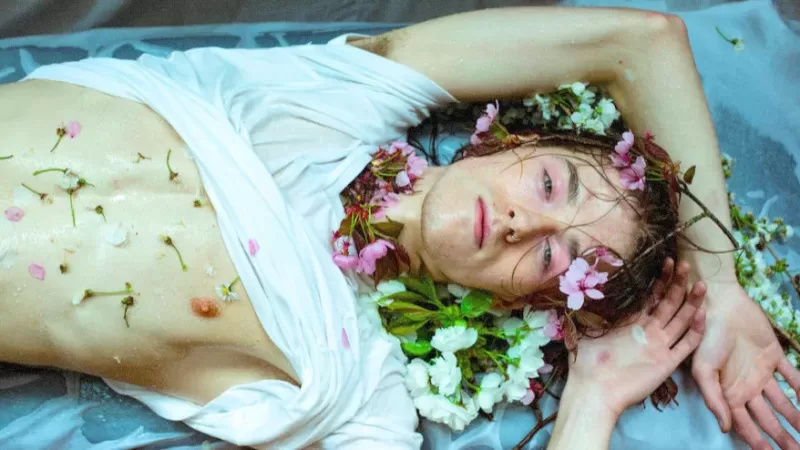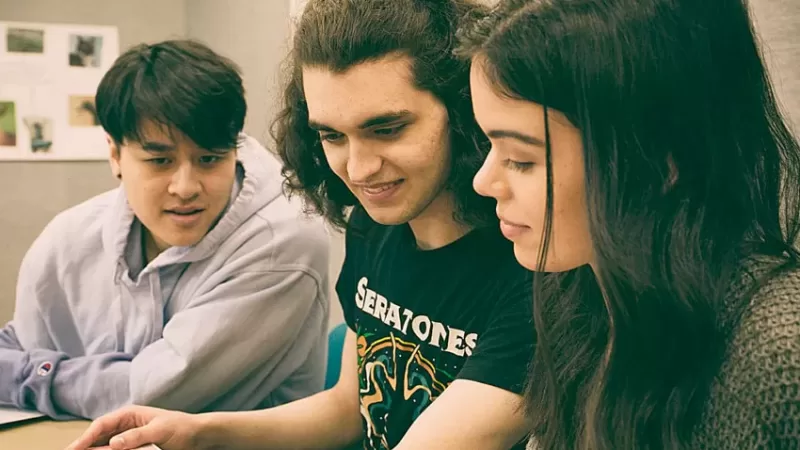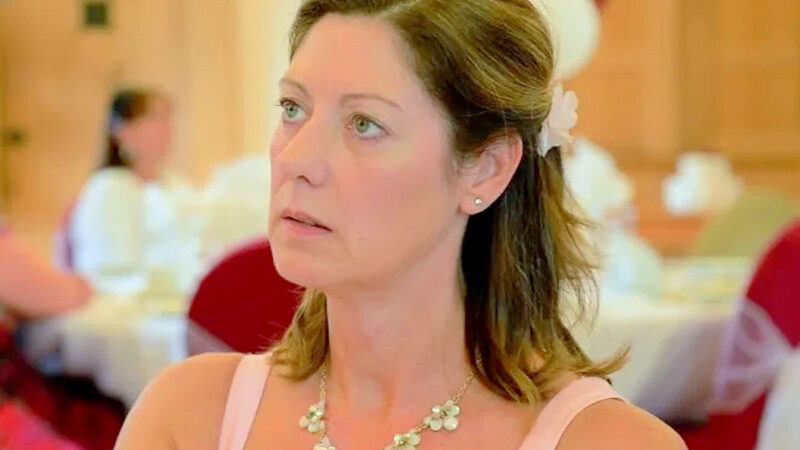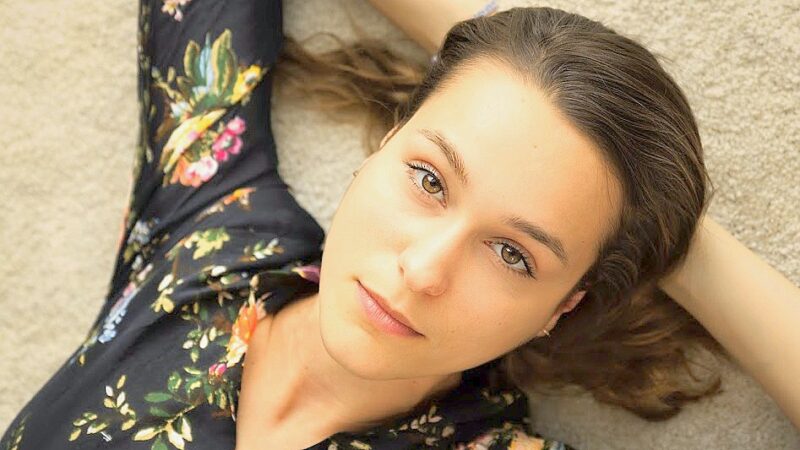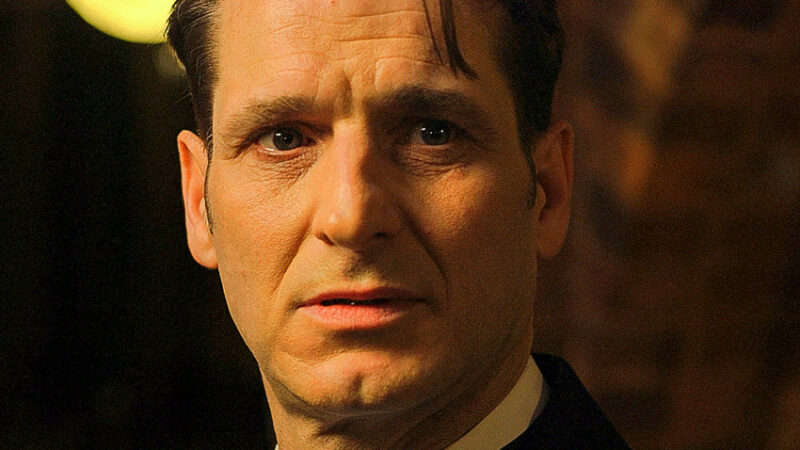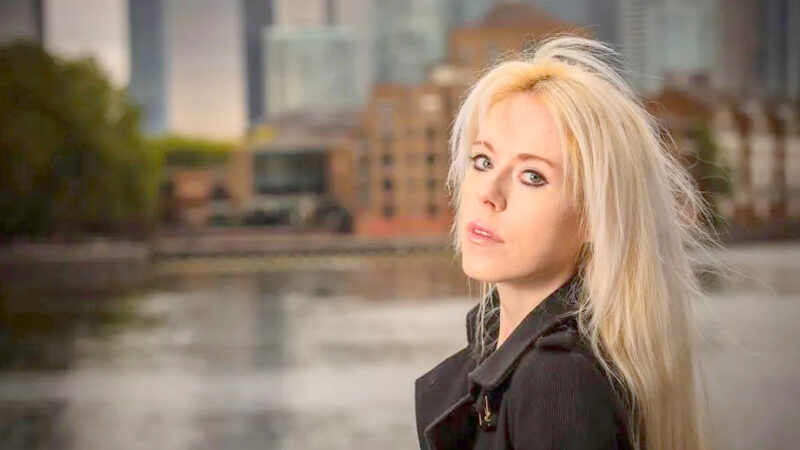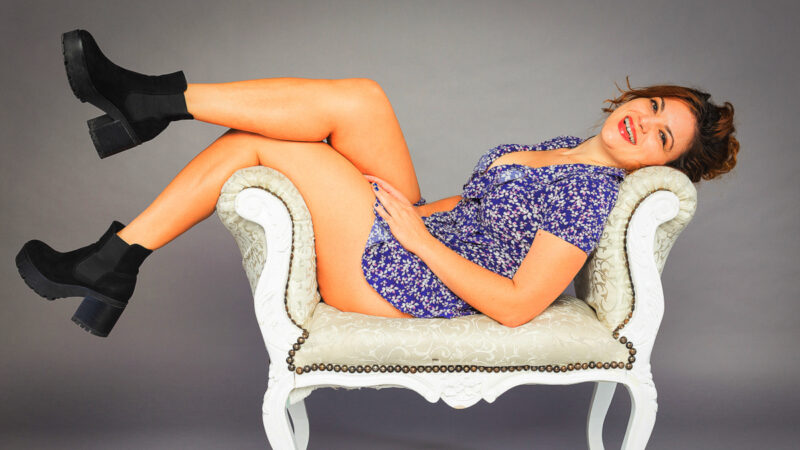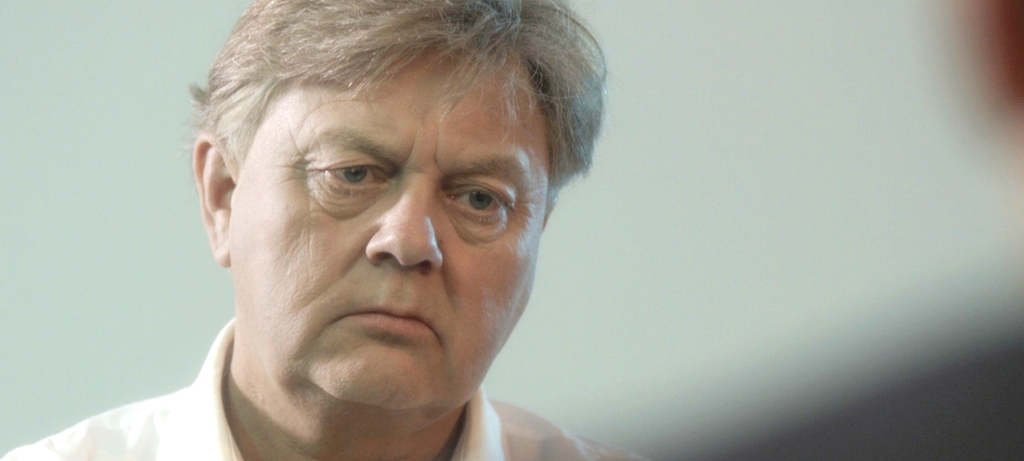
Graham Cawte in Emotional Motor Unit
indieactivity: Introduce your film briefly ?
Adam: Emotional Motor Unit is the story of a lonely writer, who learns what it means to be human through his interactions with an emotional motor unit robot. It looks at what it means to be human in a world where emotions are regulated and controlled, where work is the primary reasons people exist and where your place in the system is determined for you. The film has a very cold, drab style that comes alive as the writer interacts with the emotional motor unit. It’s my ode to Blade Runner, which is my second favourite film and has had an immeasurable effect on my filmmaking.
indieactivity: How did you develop your film?
Adam: Apple Park Films’ first feature film Little Pieces saw a fair amount of success despite its low budget and small scale. After pitching a second feature film idea to an array of production companies I decided that I wanted to make a short film that built on the ambitions I had for Little Pieces. I partnered with some of the cast/crew I had worked with on Little Pieces and we did an open call for short film scripts. We received an unbelievable amount of log lines and ideas, just under a thousand by my estimate, and whittled that down to twenty scripts we wanted to read. I selected Emotional Motor Unit from that pool of scripts, met with the writer Xènia Puiggrós and we worked together on developing the script. The script was in pretty good shape when I first read it, but we had to make some alterations based on the estimated budget we would be working with
indieactivity: How was it financed?
Adam Nelson: Little Pieces’ success was noticed by a local business owner and when it was nominated for a National Film Award in 2016 that same business owner agreed to fund Emotional Motor Unit for far more than we needed.
indieactivity: How long was your pre-production?
Adam: Once we had accrued the budget pre-production lasted about a month and half. We did some preliminary work before we received the budget, but it really kicked into gear about three weeks before the shoot started.
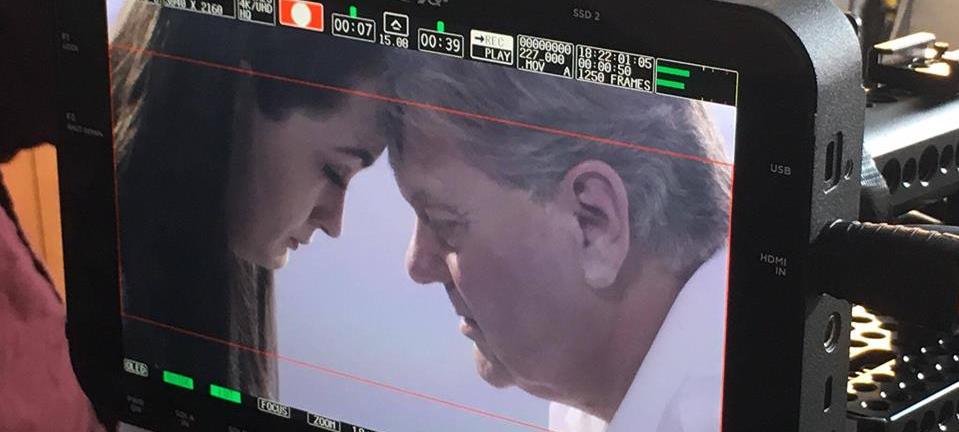
Graham Cawte Francesca Burgoyne through the viewfinder
indieactivity: What was your rehearsal process, and period?
Adam: I don’t like to do lots of rehearsal so we brought most of the cast together to do a read through and discuss ideas shortly after casting was completed. This helped me develop my own ideas as I continued my process as director. I prefer the sense of spontaneity that comes with being on set and being in the moment and too many rehearsals can kill that.
indieactivity: You shot the film in 4 days? How long were the days?
Adam: Really long days, especially the first two when we hadn’t quite found our pace. We barely stopped and rearranged the schedule regularly during the shoot. I owe a lot to Xènia, who acted as my first AD, on the shoot. If it hadn’t been for her we would have fallen really far behind, as I didn’t feel that I was as prepared as I should be because I was balancing director and producer responsibilities.
indieactivity: Did the tight shooting schedule make it harder or easier? How did it affect performances?
Adam: I think harder, we certainly had to lose some of the things I would have liked to get in the can. I did my best to not let it affect performances. I generally don’t like to do lots of takes, especially if it’s very dialogue driven as it’s easy for the dialogue become robotic after three or four takes. Watching the film back I’m very happy with the performances. I think the performers nailed exactly what I was looking for.
indieactivity: What was the experience like of working with such a small shooting crew?
Adam: The crew on Emotional Motor Unit is actually the biggest crew I’ve worked with so far in my career. The larger budget allowed me to have departments for the first time instead of just crew. It was great to be able to leave departments to their jobs whilst I could focus on the really important aspects of my job i.e. the fun creative stuff.
indieactivity: The film looks stunning. How did you get such a good look when shooting so fast?
Adam: That’s entirely down to Dagmar, Joanns and Tim (the camera department). Their hard work and dedication to the project really gave the film the look I was aiming for. Dagmar’s work is especially impressive because she only came onto the project at the last minute when we had to replace our original D.o.P. She really understood what I wanted from the project and was able to translate that perfectly.
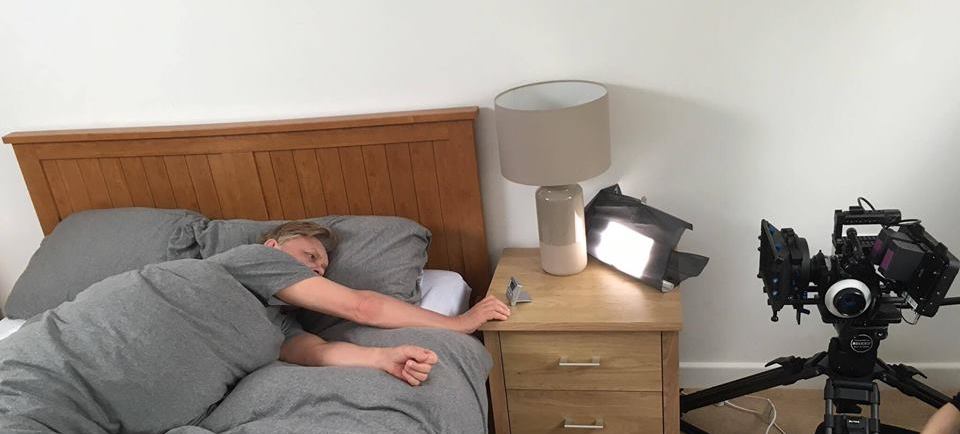
Graham Cawte Scene setup
indieactivity: Did you look at rushes? On what format?
Adam: I did, but due to the long shooting days and schedule changes I didn’t have enough time to watch every rush on every day. I had to trust Dagmar to get it right, and clearly she did.
indieactivity: What were the advantages and disadvantages in the way you worked?
Adam: The biggest advantage is definitely that we’ve made a really good film, that’s received a lot of critical acclaim and festival attention. The biggest disadvantage was my trying to balance the role of producer and director whilst on set. I didn’t feel truly prepared when I stepped onto the set and whilst on set I struggled to balance the roles and focus on what I needed to do.
Jack Roper Joins Cast of Bruno Pischiutta’s Mega-Film Project, The Trilogy
British Actor Jack Roper joins Stephanie Tripp, Seven Grant, and Cristina Perez
The Exploding Boy by Monty Wolfe. The Micro-Budget Queer Coming Of Age Comedy
Monty Wolfe delivers an up-beat alternative to reboots, remakes, and sequels.

